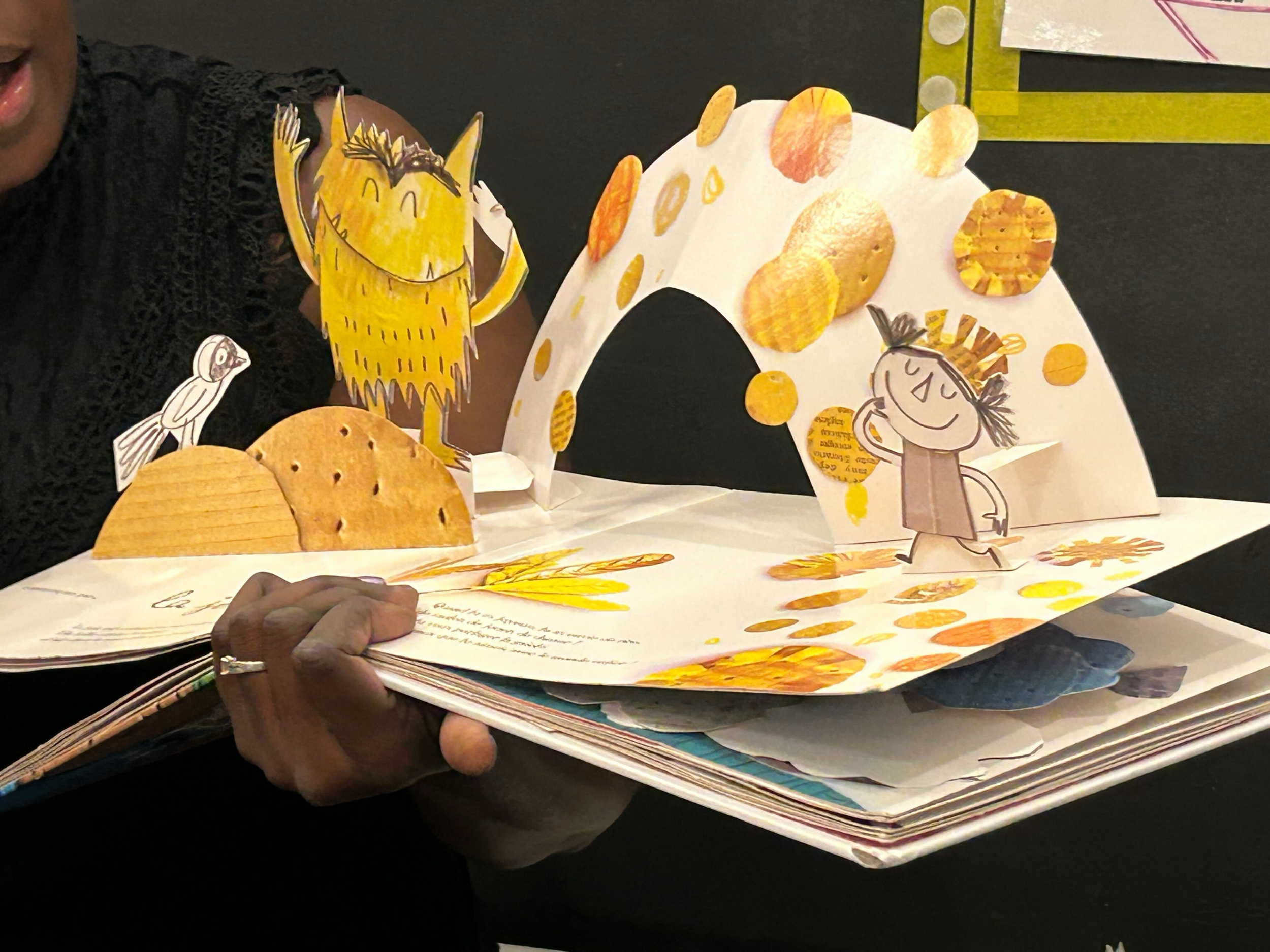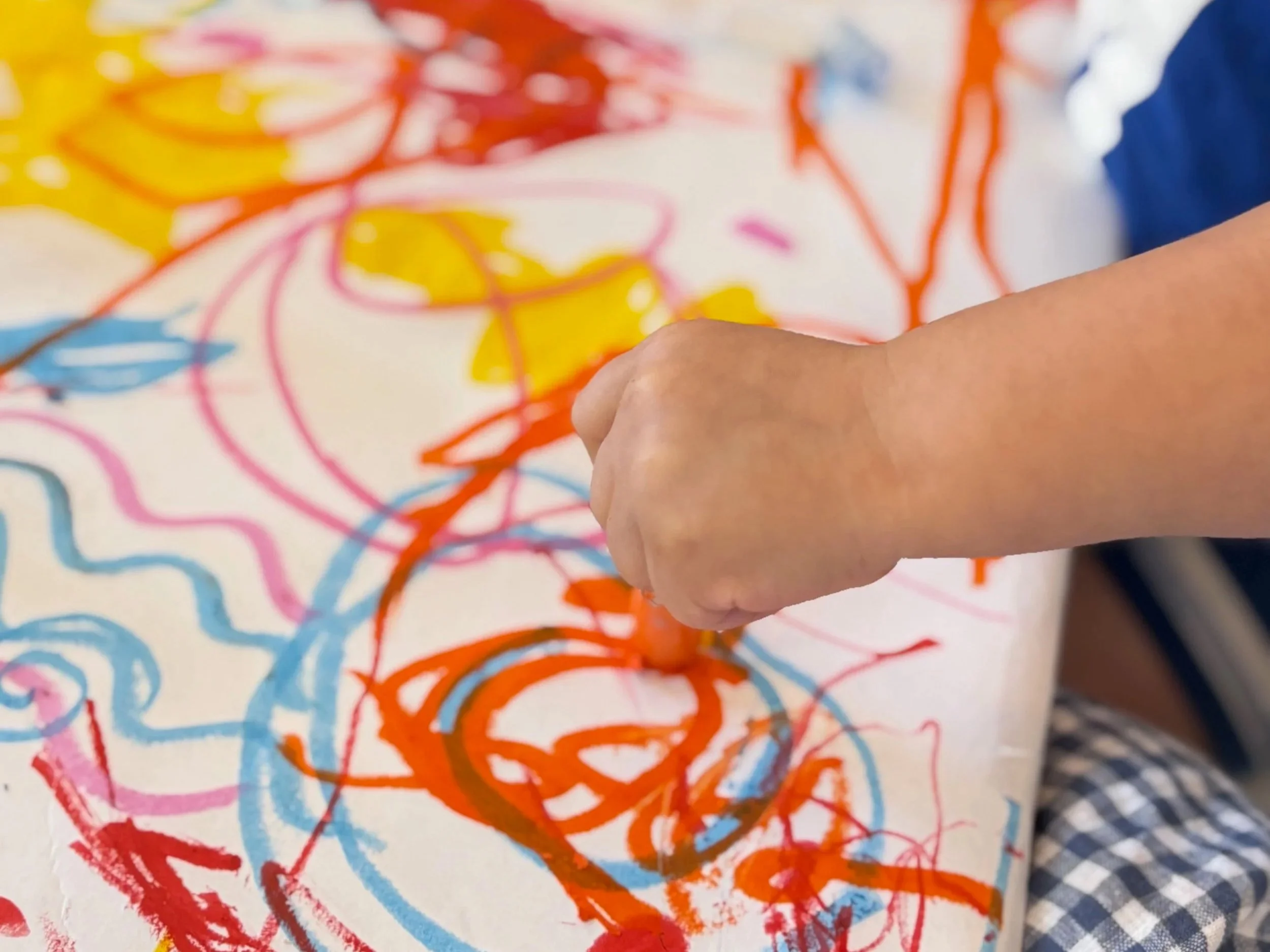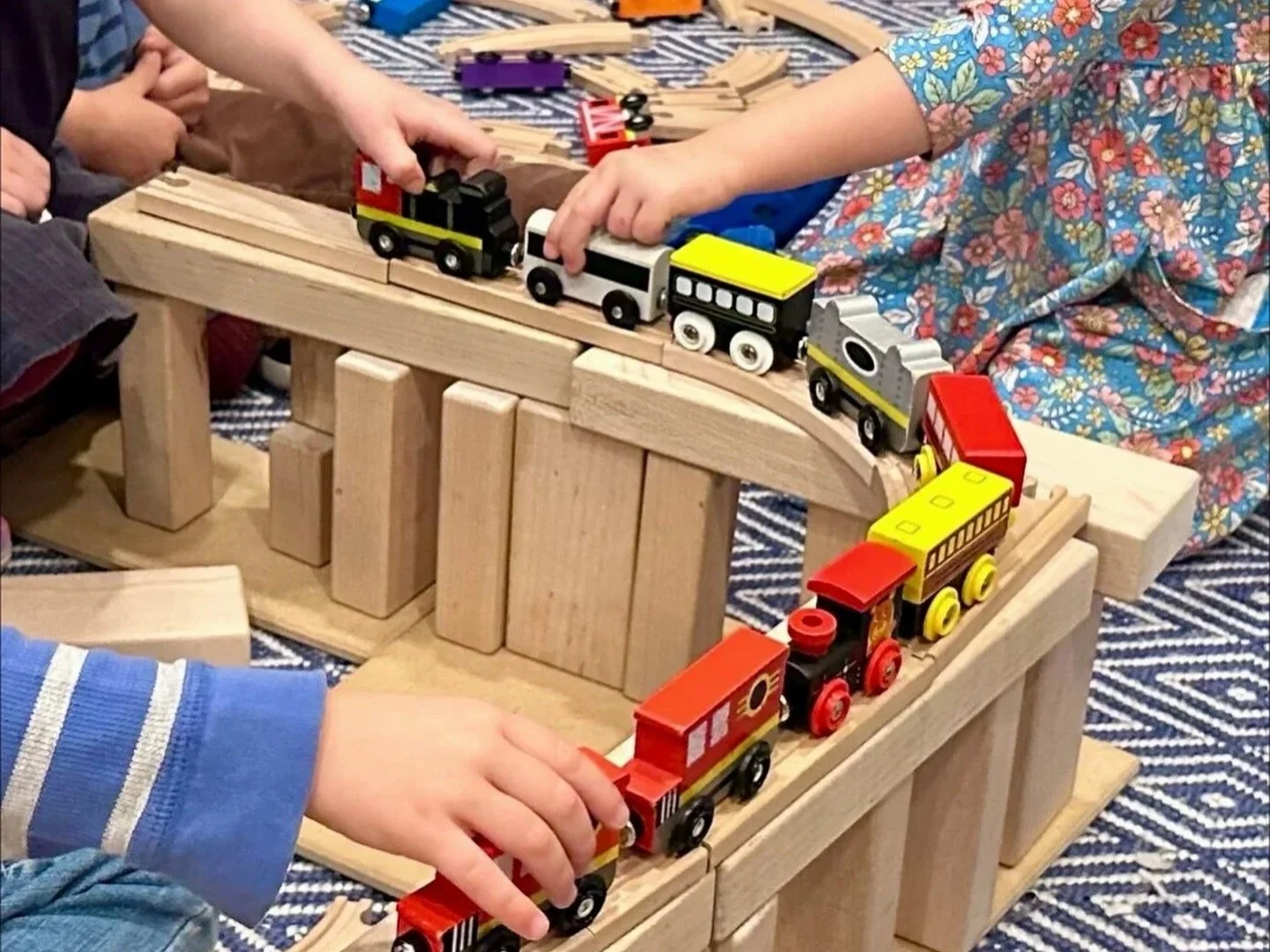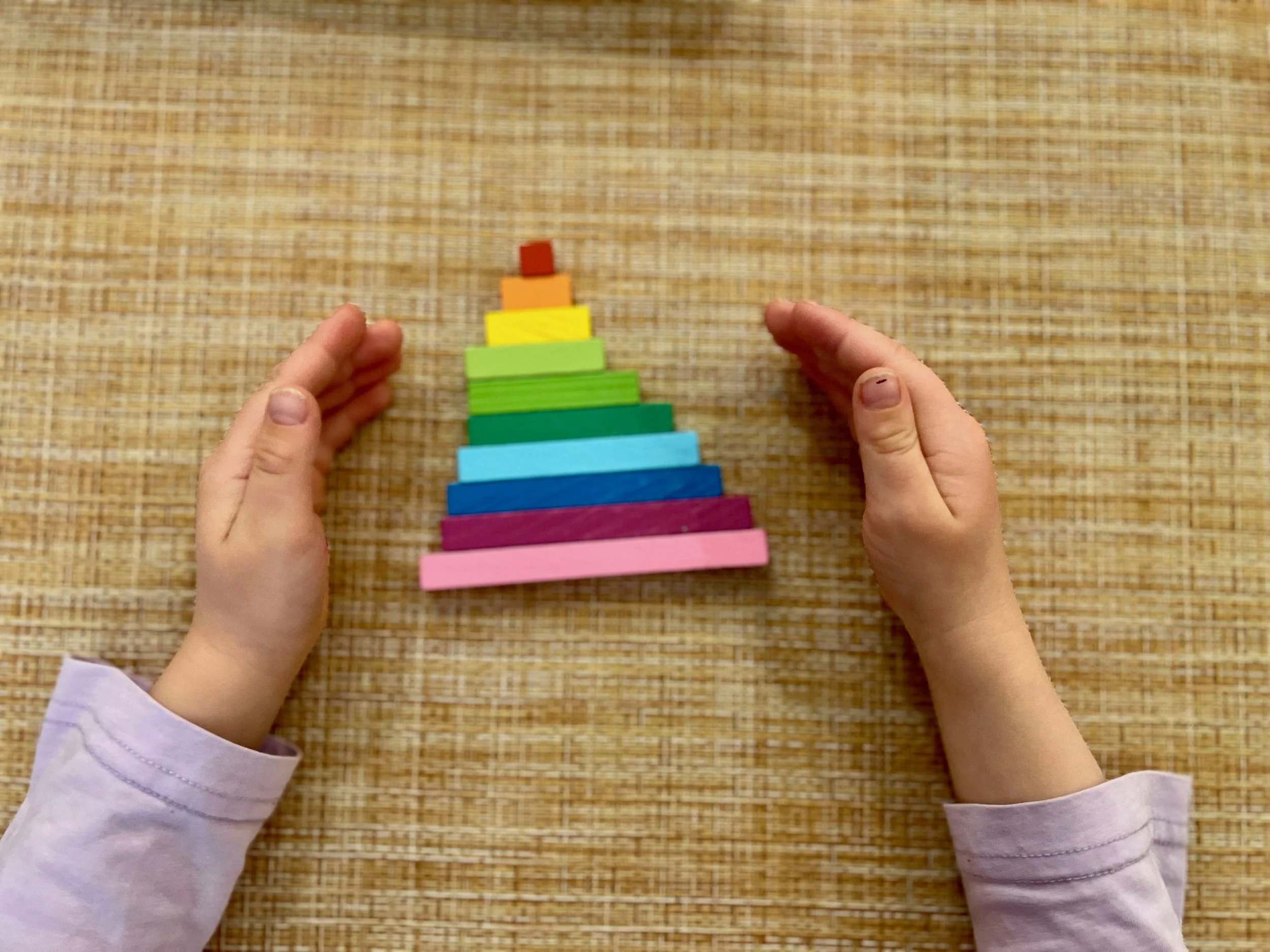Holiday Gift Guide
Salut! Below, we’ve distilled a few meaningful, lasting ideas, whether for holidays, birthdays, or just because. We know that families observe this season in many different ways.
Olivia curated a list of her favorite, most resonant children’s books, choosing classic titles available in both English and French. Marina gathered her preferred art materials (many of which we use at school). Peggy put together ideas for a small “math corner” at home. And Tara compiled her favorite toys for young children, all chosen with an eye toward open-ended play, imagination, and deep engagement. These are gift ideas shaped by some of the brilliant educators who know your children best. You’ll notice there are no electronic toys or flashcards on the list!
These materials invite concentration and focus, and they help children settle in, dig deeply, and lose themselves in what they’re doing. These are the gifts that support self-directed exploration and allow children to spend time in their own world, their own imaginative space.
Joyeuses fêtes à tous.
Olivia’s Book List
A small gift guide for big feelings
Reading books with children is as cozy as it gets. What’s more – books by authors attuned to child development can give children a safe distance to look at, understand, and integrate strong feelings. Sitting beside an adult, engaged in a good story, can allow worry, anger, separation, and repair to be present in a manageable way for young children.
This list includes nine of my all time favorite titles available in both English and French. They are staples for any young child’s library. Each one touches something essential in the emotional life of young children: power vs. powerlessness, the push-and-pull of independence, the fear of being left, the wish to test limits, and the relief of always being welcomed back.
1. Bonsoir Lune / Goodnight Moon
Margaret Wise Brown was uniquely attuned to the inner life of the child. This is a deeply familiar bedtime ritual with comforting repetition that helps children feel safe and able to let go of worries at bedtime.
2. Bébés Chouettes / Owl Babies
This is a classic, gentle book about separation. Three siblings respond to their mother’s absence in different ways: steady, worried, and panicked. It’s a beautiful, reassuring story affirming that grown-ups come back, and helps children name, navigate and integrate their feelings about it all.
3. Jour de neige / The Snowy Day
Ezra Jack Keats wrote many children’s books, but this is one of his best. It’s about a child exploring on a snowy day in Brooklyn on his own terms: noticing, experimenting, and then returning home. It celebrates independence, slowing down, and cause and effect.
4. Max et les Maximonstres / Where the Wild Things Are
This is an amazing story about the intensity of a child’s feelings. He goes out into a new land, has his wildness and power seen, understood, and celebrated. He then returns to warmth, and a reminder that a parents’ limits don’t mean they stop loving him. Let the wild rumpus start!
5. Non, David! / No, David!
Encore du “power vs. powerlessness!” David is a child who breaks rules, and is still loved. It makes space for limit-testing, limit-setting, and repair.
6. Pas facile d’attendre / Waiting Is Not Easy!
Oh, Mo Willems, je t’adore. This story is about an elephant who wants something, now. I can’t count the number of times I have uttered the phrase “waiting is not easy” in early childhood classrooms.
7. Devine combien je t’aime / Guess How Much I Love You
This is another great bedtime story to read over and over again. It’s a reminder of the infinite depth of unconditional love between a child and their parent.
8. La couleur des émotions / The Color Monster
A simple, visual way for children to sort through strong feelings—joy, sadness, anger, fear, calm—without being overwhelmed. It helps them see emotions as something they can name, organize, and move through.
Bonus: Let’s Cook French: A Family Cookbook by Claudine Pépin
Cooking lets children take part in real work of measuring, pouring, stirring. Cooking together builds closeness and a sense of competence. Claudine Pépin’s cookbook offers simple, timeless French dishes that children can truly help make. Chez moi, we make the gratin aux pommes de terre each winter. It’s simple enough for young children to join in, and my daughter now makes it on her own.
Marina’s Art Supplies
Real materials for real artists
For ten years, Marina has built an art program that treats children as artists from the start. She chooses the same kinds of materials an adult artist would use; nothing is pre-cut, themed, nor decides the outcome. These materials support focus, experimentation, and real artistic decision-making.
These are the tools she returns to year after year:
Drawing Tools
Why she loves them:
Strong color, clean lines, and real control — tools that let children work the way artists work.
Paint & Paper
Reliable materials that hold water well and let children test color, saturation, and brushwork.
Printmaking & Stamping
Shachihata Irodori stamp pad (for fingerprinting)
Simple shapes and real printmaking tools that support repetition, composition, and pattern.
Collage
Adds dimension without directing the child’s idea.
Books That Support Art Making
Strong, simple invitations to explore color, shape, and process.
Tara’s Toy Guide
Materials for open-ended play
Tara knows that the best toys are the ones that invite imagination, possibility, and long stretches of focused play. She looks for materials that support children’s storytelling, physical coordination, spatial awareness, and social play. These open-ended toys are the ones that stay in children’s hands and minds, helping them build their own worlds and explore ideas in a way that feels deeply satisfying.
Movement & Balance
• Wooden Balance Board
Supports core strength, balance, and whole-body imagination.
• Rainbow Stepping Stones
Encourages creating paths, sequencing, and playful movement.
Construction & Building
• Little Bricks
Scaled to miniature brick size to invite early architecture and focused building.
• Grimm’s Puzzle Building Set ($$)
Part puzzle, part sculpture, built to last — for exploring shape, balance, and design.
• Giant Floor Puzzle
A collaborative, calming way to build focus, persistence, and satisfaction.
• Unit Blocks
The same classic wooden blocks we use in every classroom across all campuses. Unit blocks offer endless possibilities for building, balancing, and storytelling. They are a foundational material that supports mathematical thinking, collaboration, spatial awareness, and extended play.
Dramatic Play & Care
• Wooden Play Stroller ($)
More economic option: Baby Doll Stroller
A nurturing invitation for caregiving play, gentleness, and family routines.
• Doctor Set
Supports emotional processing around care, vulnerability, and agency.
Storytelling & Small Worlds
• Playsilks + Play Clips
Soft fabric and simple clips that become tents, rivers, costumes, or small worlds.
• Grapat Storytelling Set
Tiny, tactile pieces that support narrative play and emotional expression.
More economic option: Peg dolls with hats & beds
• Peekaboo Lock Boxes
A beautiful way to explore curiosity, object permanence, and cause-and-effect.
Real-World Play & Community Stories
• Construction Toy Cars, Trucks, Diggers
Sturdy wooden trucks that pair beautifully with block play and small-world building.
Wonder Wise “Take With Me” Garage
A beautifully compact wooden garage that invites children into stories of movement, parking, rescue, and city life. Perfect for small spaces
• Children's Cook Set
a cook set made especially for little hands.
• Bread Play Set
For pretend cooking, picnics, restaurants, and grocery store play that mirrors the child’s daily life.
• Wooden Community Figures
A nice inclusive set focused on size/shape diversity as well as skin tones.
Peggy’s Favorite Math Materials
Simple, open-ended materials children use again and again
After her last Coffee & Conversation, Peggy gathered a few suggestions for math materials that support the kind of thinking children naturally do — sorting, organizing, comparing, building, and making up their own games. These materials are open-ended, sturdy, and endlessly reusable.
Sorting + Collecting Sets
Children can use these to make categories, group items, and reorganize ideas over and over.
Multicolored popsicle sticks
Pair with: egg cartons, muffin tins, sectioned trays, small boxes.
Magnetic Math Play
The refrigerator door becomes a simple, vertical workspace for building and sorting.
Optional: magnetic numbers 1–5 or 1–10 (if your child is already curious about symbols).
Games That Build Flexible Thinking
Patterning, turn-taking, memory, and early strategy.
Memory matching game
(Clean, simple images work best.)




